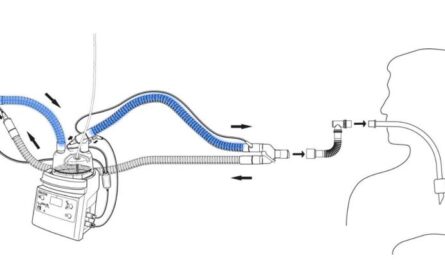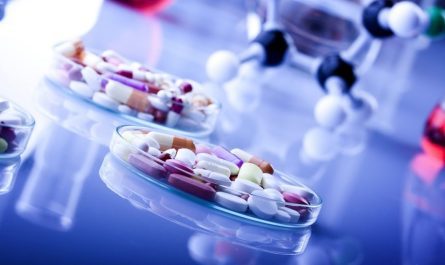
Introduction to Protein A Resin
Protein A resin is an affinity chromatography resin widely used in the purification of immunoglobulin G (IgG) antibodies from various sources like serum, ascites fluid or cell culture supernatant. Protein A has a strong and specific affinity for the Fc region of IgG molecules from several species like human, mouse, rat etc. This characteristic property makes Protein A resin highly useful for monoclonal antibody purification on an industrial scale.
Chemistry and Binding Mechanism
Protein A is a cell wall protein naturally produced by Staphylococcus aureus bacteria. It contains five or six highly homologous Ig-binding domains that strongly and specifically interact with the Fc region of IgG molecules. Commercially available Protein A resins are made by recombinantly expressing the IgG-binding domains of Protein A on various matrix support like agarose, sepharose or acrylamide. The binding mechanism involves cooperative non-covalent interactions between the histidine, aspartic acid, and tryptophan residues on Protein A with charged patches on the Fc region of IgG. This allows IgG molecules to tightly and reversibly bind to Protein A based affinity matrices even at industrial scale purifications.
Purification process using Protein A resin
The typical Protein A purification process involves loading the sample containing IgG antibodies onto a gravity-flow Protein A column equilibrated with binding buffer like phosphate buffered saline (PBS) pH 7.4. As the sample passes through the column, IgG molecules selectively and tightly bind to Protein A due to their high affinity. Non-IgG contaminants like host cell proteins, DNA etc pass through the column unbound. Next, the column is washed extensively with binding buffer to remove any unbound impurities. Highly pure IgG is then eluted from the column using acidic buffers like glycine pH 2.5-3.0 which disrupts the binding interaction between Protein A and IgG Fc region. The eluted IgG fraction is immediately neutralized to physiological pH using buffers like Tris-HCl pH 8.0-9.0. A final polish step may also be done using size-exclusion chromatography to remove any aggregates.
Advantages of Protein A Resin
Some key advantages of using Protein A affinity chromatography for IgG purification include:
– High specificity and affinity: Protein A selectively binds IgG with very high affinity (Kd ~ 10-9 M) allowing efficient purification from crude samples.
– Reproducible yields: Protein A resins give consistent and reproducible IgG yields ranging from 80-95% during industrial scale purifications.
– Rapid process: IgG can be purified from large volumes in a simple, single-step process using Protein A columns, providing highly purified antibodies in less than 2 hours.
– Applicable to several species: Protein A binds IgG from a variety of species including human, monkey, rabbit, sheep, pig, goat, mouse and rat, making it a universal purification technique.
– Robust resins: Commercially available Protein A resins retain activity even after multiple purification cycles and harsh cleaning-in-place (CIP) conditions.
Applications of Protein A purified antibodies
Monoclonal antibodies purified using Protein A affinity chromatography find applications across various areas like research, therapeutics, diagnostics due to their high purity and reproducibility. Some key applications are:
Research Applications
– Purification of antibodies for characterization, cell biology and biophysical studies.
Therapeutic Applications
– Production of therapeutic monoclonal antibodies for disorders like cancer, inflammation etc. Market leaders include trastuzumab, bevacizumab and adalimumab.
Diagnostic Applications
– ELISA and Western blot development using Protein A purified primary and secondary antibodies.
Industrial Process Development
– Purification of antibodies from preclinical and clinical batches for analytics, stability and formulation studies.
Alternatives to Protein A Resin
While Protein A remains the gold standard for monoclonal antibody purification, some alternatives that can bind IgG include Protein L, Protein G and Protein A/G resins. Each have their advantages over the other – Protein L binds certain IgGs that Protein A does not, Protein G binds IgG from more species than Protein A. Furthermore, captavistat, a recently discovered synthetic ligand also shows potential for IgG purification. However, Protein A provides the unique advantages of high capacity, selectivity, protein retention and cost-effectiveness that make it irreplaceable for industrial scale manufacturing.
Conclusion
In summary, Protein A affinity chromatography leverages the high affinity and specificity interaction between protein A and IgG molecules to facilitate rapid, reproducible and economical purification of monoclonal antibodies. The high yields and robustness of Protein A resins have made them indispensable for monoclonal antibody production in research, therapeutics and diagnostics. Given its versatility and widespread adoption, Protein A is expected to remain the backbone technology for industrial scale purifications well into the future.
*Note:
1. Source: Coherent Market Insights, Public sources, Desk research
2. We have leveraged AI tools to mine information and compile


